The views expressed in our content reflect individual perspectives and do not represent the authoritative views of the Baha'i Faith.
Dr. George Washington Carver was one of the most famous African Americans of his time.
Although he was born into slavery, he later made history as an extraordinary inventor, agricultural scientist, and educator. Learn about his hundreds of remarkable achievements, his resilient and service-oriented spirit, and his lesser-known appreciation of the Baha’i Faith.
RELATED: 9 African American Inventors Who Changed the World
Facts About Dr. George Washington Carver’s Early Life and Education
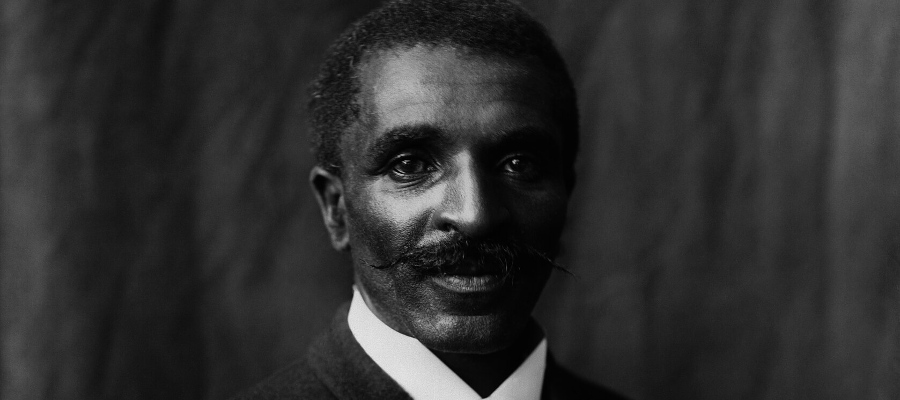
Dr. George Washington Carver was born in 1864 in Diamond Grove, Newton County, Missouri, to parents Mary and Giles, a couple enslaved by German American immigrant Moses Carver. George’s father, Giles, died in an accident before George was born. When George was just a week old, he, his sister, and his mother were kidnapped from Moses Carver’s farm and sold in Kentucky. Moses hired somebody to look for them, but George was the only one he found.
After the Civil War was over and chattel slavery was abolished in the United States, George and his older brother, James, stayed with Moses and his wife, Susan. Since George was too sick and feeble to work in the fields, he helped Susan do laundry, cook, mend, embroider, and garden. At a young age, George became fascinated with plants and became known as “the plant doctor,” experimenting with natural pesticides, fungicides, and soil conditioners. Unlike most former enslavers, Moses and Susan did teach George and James how to read and write.
Since Black people weren’t allowed at the public school in Diamond Grove, he left the Carvers to attend an all-Black school 10 miles away in the town of Neosho when George was around 11 years old. Once he reached that town and saw that the school was closed that night, he slept in a barn nearby. The next morning, he met a kind Black woman named Mariah Watkins. George grew up at a time when Black people were regarded as property, so he introduced himself as “Carver’s George” when he met Mariah. Mariah told him that from then on, he should refer to himself as “George Carver.” He later added the middle initial “W,” a letter he picked randomly to differentiate himself from another George Carver in the same town and avoid confusion in the mail. Years later, when a reporter asked him if his middle initial stood for “Washington,” he smiled and said, “Why not?” It’s speculated that “Washington” refers to “Booker T. Washington.”
Mariah and her husband, Andrew Watkins, who had no children of their own, let George stay with them while he attended that school. Mariah had an especially positive impact on George. She introduced him to the African Methodist Episcopal Church and shared her knowledge of medicinal herbs. She told him, “You must learn all you can, then go back out into the world and give your learning back to the people.”
In pursuit of a better education, George moved to Kansas two years later and graduated from Minneapolis High School in Minneapolis, Kansas, in 1880. He was accepted into the all-white Highland College (now Highland Community College) in Kansas but was later rejected when they realized he was Black. Although George was fascinated with plants, he was also interested in the arts and decided to study art and music at Simpson College in Iowa in 1890. His skill and fascination with drawing and painting the natural world prompted his teacher to encourage George to study botany at the Iowa State Agricultural College (now Iowa State University). In 1894, George made history as the first African American to earn a Bachelor of Science degree. He then earned his Master of Agriculture degree in 1896.
What Did Dr. George Washington Carver Invent?
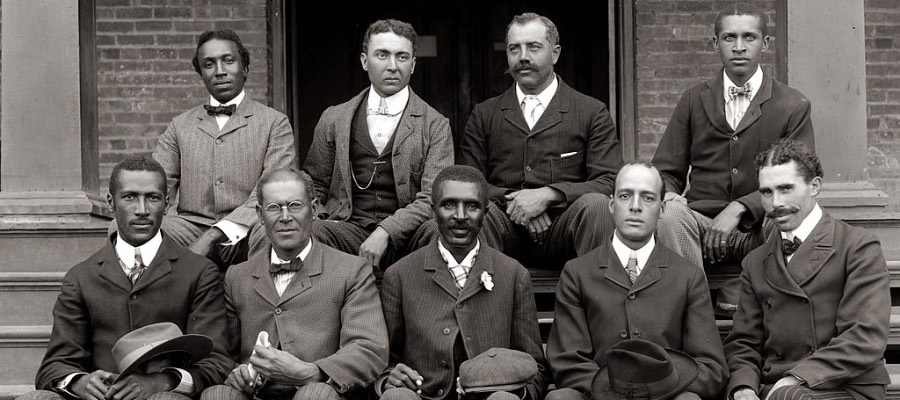
The famous African American author, orator, and educator Booker T. Washington, the founder of the Tuskegee Institute (now Tuskegee University), hired George to direct the school’s agricultural department in 1896, and he had great success in the laboratory and the world.
George taught impoverished farmers innovative methods for improving their farming practices. Rather than relying on commercial feed for hogs, he taught them how to use acorns to feed them instead and showed them how to enrich their fields with natural materials like swamp muck instead of costly fertilizers. He also recognized that continuous cotton farming had depleted the soil of essential nutrients, leading to poor crop yields. By advocating for the cultivation of nitrogen-fixing crops such as peanuts, soybeans, and sweet potatoes, he demonstrated how soil fertility could be restored, stabilizing the livelihood of American Southerners. To further aid farmers, he invented the Jessup wagon, a mobile classroom and laboratory pulled by horses. This wagon allowed him to educate farmers directly in the field about the principles of soil chemistry and demonstrate practical techniques for improving their agricultural practices. A renowned scientific expert, George advised leaders like President Theodore Roosevelt and Mahatma Gandhi on agriculture and nutrition.
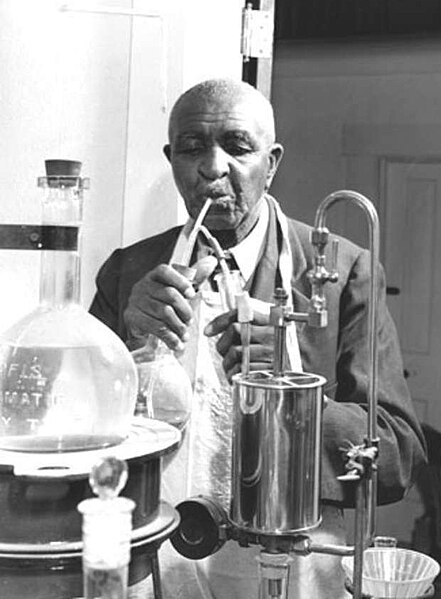
George also invented over 300 products from peanuts and 118 products from sweet potatoes, including but not limited to cooking oils, vinegar, molasses, yeast, dry coffee, cocoa, buttermilk, flours, starches, sauces like Worcestershire Sauce, condiments like mayonnaise, candy like caramel and butterscotch, as well as medicinal oils, dyes, paints, writing ink, printer’s ink, paper, soaps, shampoos, lotions, shaving cream, laxatives, plastics, insecticide, synthetic cotton and silk, glue, gasoline, and rubber. His rubber helped the auto magnate Henry Ford. They worked on many projects together. For example, one of George’s inventions enabled Ford cars to come in different colors besides black and white.
As the Baha’i writings say:
Thus, great discoveries have been made, mighty enterprises have been established, wonderful inventions have appeared, and the mysteries of the universe have stepped forth from the invisible plane into the realm of the visible.
George shared how God revealed these “mysteries of the universe” to him. He said, “No books ever go into my laboratory. The thing I am to do and the way are revealed to me the moment I am inspired to create something new. Without God to draw aside the curtain, I would be helpless. Only alone can I draw close enough to God to discover His secrets.”
How Dr. George Washington Carver Learned About the Baha’i Faith

The Baha’i Faith is a world religion that centers around oneness — one God, one human race, and one progressive revelation. George believed in this oneness. He said, “Our creator is the same and never changes despite the names given Him by people here and in all parts of the world. Even if we gave Him no name at all, He would still be there, within us, waiting to give us good on this earth.”
He learned about the Baha’i Faith after Booker T. Washington invited Louis Gregory, an early African American Baha’i, to speak to the students at the Tuskegee Institute about the Baha’i Faith.
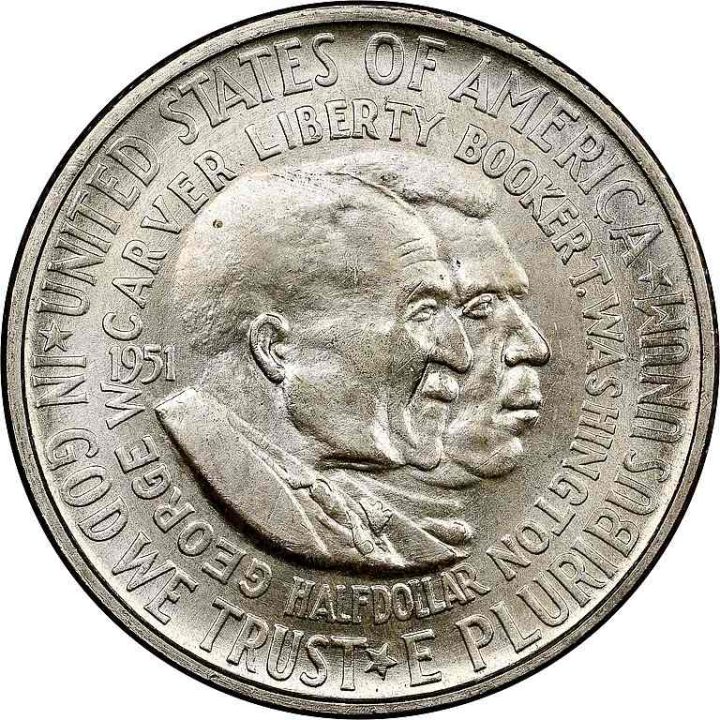
The revolutionary principles of the Baha’i Faith include the eradication of all forms of prejudice, the elimination of the extremes of wealth and poverty, the equality of women and men, the agreement of science and religion, the truth and oneness of all religions, the independent investigation of truth, and the importance of a universal language and education.
Harlan F. Ober, a member of the National Spiritual Assembly of the Baha’is of the United States and Canada from 1938 to 1941, wrote, “Their response to the Bahá’í ideals and principles was most enthusiastic. Here he made the acquaintance of that outstanding Negro genius and man of God, Dr. George Washington Carver, who showed the utmost appreciation of the Faith. This was the beginning of an increasingly rich friendship. Whenever Mr. Gregory went to Tuskegee, and he visited there many times, he had understanding and sympathetic talks with Dr. Carver in his famous laboratory or in his room.”
George wrote, “I am so happy to know that the Christ-like Gospel of good will is growing throughout the world. You hold in your organization [the Baha’i Faith] the key that will settle all of our difficulties, real and imaginary. I was with you in spirit. May God bless, keep and prosper you.”
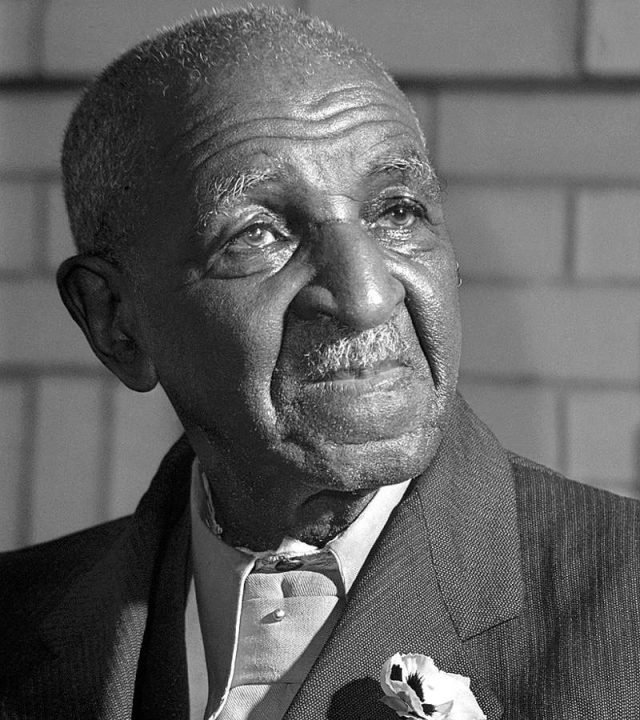
George passed away on January 5, 1943. He was buried next to Booker T. Washington on the grounds of the Tuskegee Institute. He was the first African American and first non-president to receive his own monument in the U.S. The George Washington Carver National Monument is currently in Diamond, Missouri. George was awarded honorary doctorates from Simpson College and Selma University during his lifetime. Additionally, Iowa State University granted him a posthumous doctorate in 1994. He was also posthumously inducted into the National Inventors Hall of Fame.
The Baha’i writings say:
Man’s merit lieth in service and virtue and not in the pageantry of wealth and riches.
All Dr. George Washington Carver cared about was serving humanity. His epitaph reads: “He could have added fortune to fame, but caring for neither, he found happiness and honor in being helpful to the world.”
You May Also Like
Comments



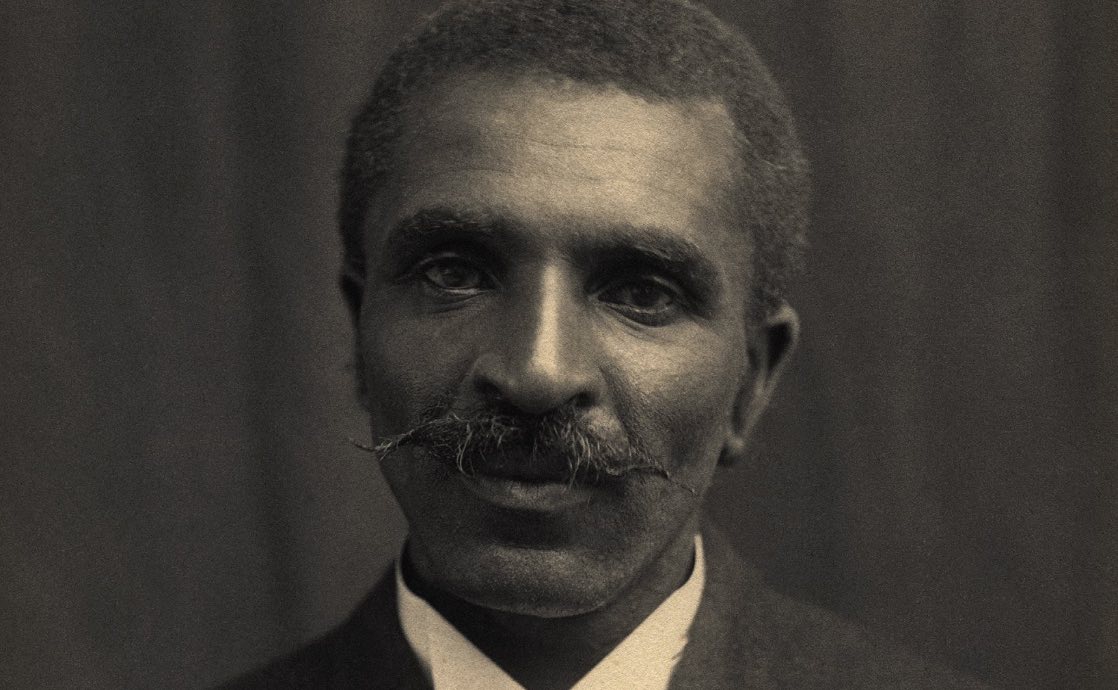













Like G. W. Carver, I hold in high regard the Baha'i vision for a Christ-like service and loving embrace of all people - while remaining a devoted Christian myself. I appreciate the evident good that Baha'is have accomplished in the world, and I know that many Baha'is are genuine partners with devoted Christians in manifesting Christ's plan for the Kingdom of God.